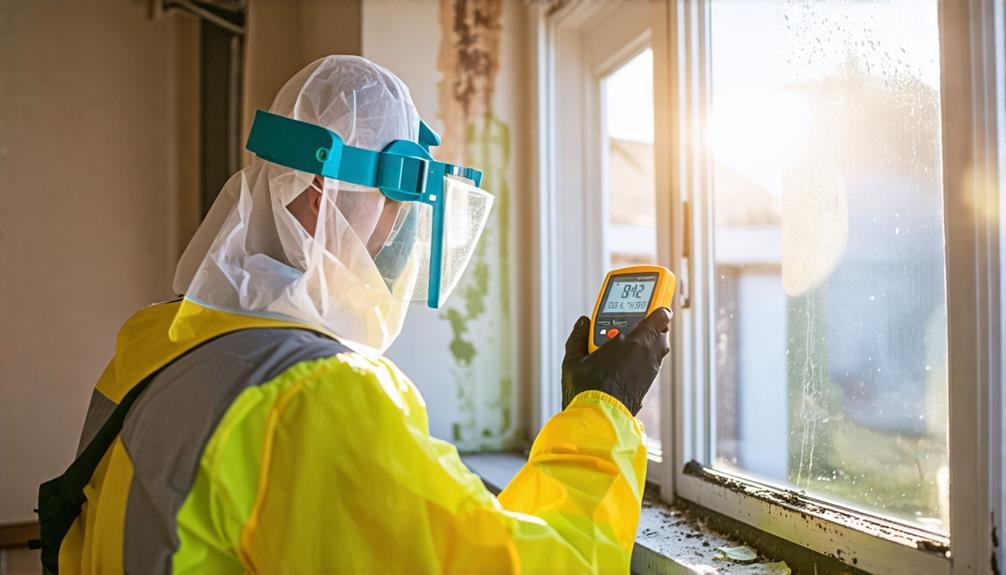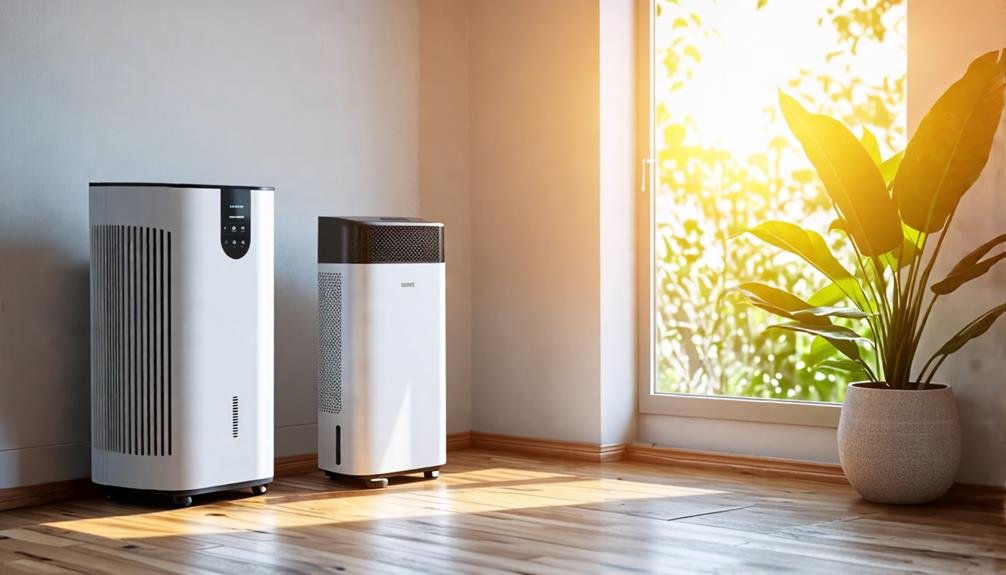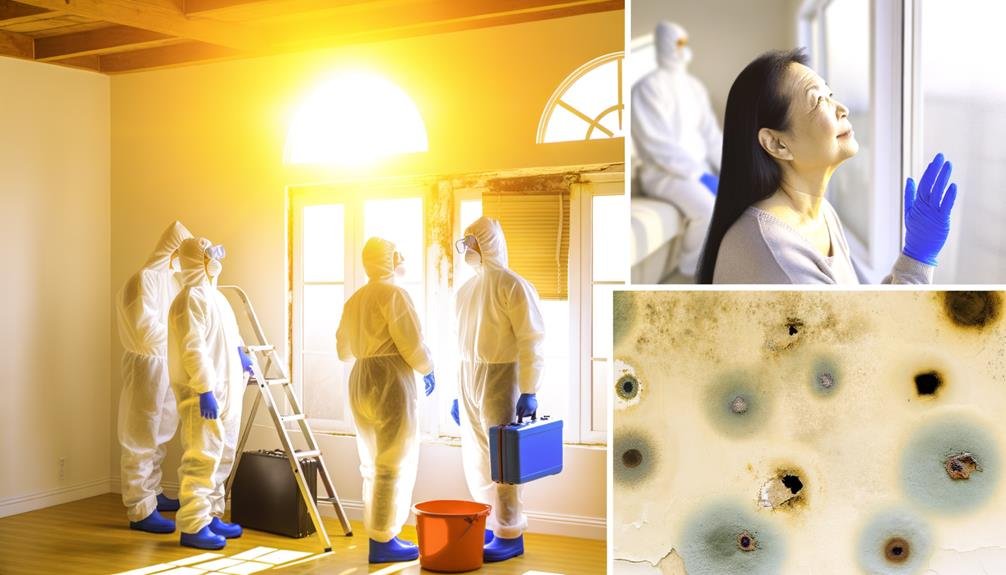If you're facing mold issues in East Point, expert remediation is vital for effective resolution. Mold thrives in damp areas, so be alert for musty odors, visible patches, or water stains, as these signify potential problems. Professionals use containment techniques and targeted chemical treatments to eliminate mold while preventing future growth. It's important to identify and tackle moisture sources immediately. Regular inspections and maintaining humidity levels between 30% and 50% can help prevent reoccurrence. To investigate effective strategies and solutions tailored to your situation, it's beneficial to look into thorough mold management techniques.
Understanding Mold Growth

Mold growth thrives in damp, warm environments where moisture levels exceed 60%, making understanding its conditions fundamental for effective remediation. Mold biology involves a complex interaction between spores, moisture, and organic materials. When you provide the right conditions, mold can colonize quickly, often within 24 to 48 hours. This rapid growth is why moisture control is critical in preventing infestations.
To manage mold effectively, you must first identify and eliminate moisture sources. Check for leaks, condensation, or high humidity in your environment. Using dehumidifiers and ensuring proper ventilation are practical steps you can take to reduce moisture levels. It's also significant to monitor areas prone to dampness, such as basements, bathrooms, and crawl spaces.
Moreover, understanding the different types of mold can help you identify potential risks. Some molds produce mycotoxins that can be harmful to health, making prompt action fundamental. By maintaining a dry environment and practicing moisture control, you can minimize mold growth and protect your space. Ultimately, knowledge about mold biology and effective moisture management empowers you to create a healthier living environment.
Signs You Need Remediation
Recognizing the signs of mold presence is vital for determining when remediation is necessary to protect your health and property. One of the first indicators includes a musty odor, often arising from hidden mold growth in your walls or under flooring. If you notice any visible mold patches, it's important to act quickly, as mold can spread rapidly and lead to significant property damage.
Keep an eye out for water stains or discoloration on walls and ceilings, which often signal moisture issues favorable to mold growth. Furthermore, if you or anyone in your household experiences unexplained respiratory issues, allergic reactions, or other symptoms linked to mold health, it's time to investigate further.
Increased humidity levels in your home can likewise be a red flag. If humidity consistently measures above 60%, you're at a higher risk for mold development. Finally, if you've recently experienced water damage or leaks, don't wait for mold to make its presence known. Taking proactive measures to address these signs helps you maintain a safe, healthy living environment while protecting your property from further damage.
Professional Remediation Techniques

When dealing with mold issues, employing professional remediation techniques guarantees effective removal and minimizes the risk of future growth. These methods are designed to tackle mold infestations efficiently while guaranteeing safety for you and your environment.
One key approach is the use of containment strategies. These involve isolating the affected area to prevent spores from spreading throughout your space. Professionals typically use plastic sheeting and negative air pressure systems to create a controlled environment during the remediation process.
Another vital element includes chemical treatments that target mold at its source. These treatments vary from biocides to eco-friendly solutions, making certain that mold is not only removed but also inhibited from returning.
Here's a quick summary of these techniques:
| Technique | Description | Benefits |
|---|---|---|
| Containment Strategies | Isolates affected areas to prevent spread | Protects unaffected spaces |
| Chemical Treatments | Uses targeted solutions to eliminate mold | Effective and long-lasting |
| Professional Oversight | Experts manage the entire remediation process | Guarantees safety and compliance |
DIY Mold Removal Tips
For homeowners looking to tackle minor mold issues, several effective DIY removal tips can help manage and mitigate the problem safely. First, consider using homemade solutions like a mixture of vinegar and water. This natural disinfectant can kill about 82% of mold species. Simply spray it on the affected area, let it sit for an hour, then scrub with a brush and rinse with water.
Another option is a baking soda and water paste. Combine them to create a thick paste, apply it to the mold, and scrub after it dries. Rinse thoroughly afterward to prevent residue.
While using these methods, always prioritize safety precautions. Wear gloves, goggles, and a mask to protect yourself from inhaling spores or coming into contact with mold. Make sure the area is well-ventilated by opening windows or using fans to circulate air.
Keep in mind that these DIY solutions work best for small patches of mold. If the problem persists or worsens, consider reaching out to professionals who can provide more thorough remediation services.
Preventing Future Mold Issues

To prevent future mold issues, maintain proper ventilation and humidity levels in your home by using dehumidifiers and guaranteeing that areas prone to moisture, like bathrooms and kitchens, are adequately aired out. Effective humidity control is essential; ideally, indoor humidity should stay between 30% and 50%. You can achieve this by regularly checking humidity levels with a hygrometer.
Improve air circulation by strategically placing fans or opening windows to allow fresh air in and stale air out. This not only helps reduce humidity but also minimizes stagnant air areas where mold thrives. Regularly inspect and clean your HVAC system to confirm it's functioning at its best, as a well-maintained system can improve air circulation and prevent moisture buildup.
Pay close attention to leaks or water damage, and address them immediately. Seal any cracks or gaps in walls and windows to keep moisture out. Furthermore, consider using mold-resistant products in construction or renovations. By implementing these strategies, you'll create an environment that discourages mold growth, allowing you the freedom to enjoy your home without the worry of future mold issues.
Conclusion
In East Point, tackling mold is essential for your health and home. Just like a weed in a garden, if you don't address it promptly, it'll spread and cause bigger problems. By understanding the signs of mold growth, employing professional remediation techniques, and taking preventive measures, you can safeguard your environment. Remember, staying proactive is key. Regular checks and maintenance will keep your space mold-free, ensuring a safe haven for you and your family.

